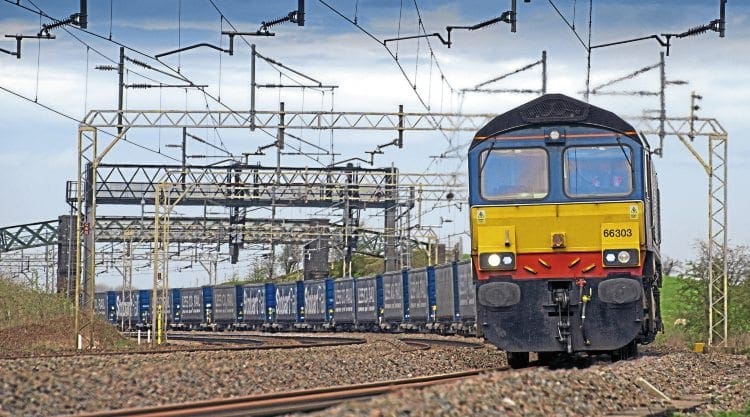Two decades after the first examples landed at Immingham Docks, Ben Jones looks back at the development and the early years of the General Motors-built machines, and their effect on the railfreight industry in the UK and mainland Europe.
Very few locomotives can claim to have revolutionised the freight operations of an entire country, but since 1998 the UK railfreright industry has been changed beyond recognition by hundreds of Class 66s imported from North America.
On a cold April 18, 1998, the first three machines – Nos. 66001/003/004 – were unloaded onto the dockside at Immingham after their long journey by rail and sea from General Motors’ Electro-Motive Division plant at London, Ontario, in Canada.

Their arrival marked the beginning of the end for hundreds of ex-British Rail diesels inherited by the privatised freight operators in the
mid-to late-1990s.
Monthly Subscription: Enjoy more Railway Magazine reading each month with free delivery to you door, and access to over 100 years in the archive, all for just £5.35 per month.
Click here to subscribe & save
Little did we know at the time that EMD’s JT42CWR design – better known as Class 66 in the UK and mainland Europe – would make such a huge impact on freight operations, both in the UK and, to a degree, in mainland Europe, where the type was at the forefront of cross-border open access operation in the early-2000s.
It was perhaps inevitable that the recently formed English Welsh & Scottish Railway (EWS), which brought the three regional Trainload Freight companies and Rail express systems together under the ownership of Ed Burkhardt’s Wisconsin Central, would choose to buy American when it needed new locomotives.
An order for no fewer than 250 3,200hp Co-Co diesel-electrics, priced at £375million, was placed with EMD, financed by Locomotion Capital (later Angel Trains) in May 1996.
By early-1998, the first locomotives were ready – the fastest delivery of an all-new locomotive type by GM.
Ed Burkhardt, then boss of EWS, accepted No. 66001 in Canada on March 23 of that year, after which it was shipped from the Port of Albany, north of New York, to Immingham. The locomotive was landed at the East Coast port on April 18 – the GM invasion had begun.
It combined a Class 59 style bodyshell with the more modern EMD 710 series 12-cylinder engine used in the North American SD-70 and 201 Class diesels built by GM for Irish Rail, and introduced a number of novel features to the UK, including bogies with steering radial axles, US-style auto-couplers, and an on-train monitoring and recording (OTMR) ‘black box’.
Read more and view more images in the July issue of The RM – on sale now!




